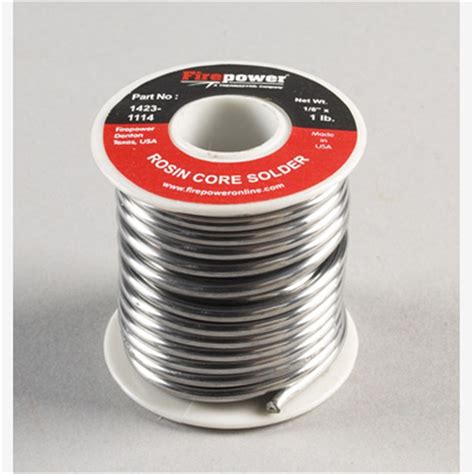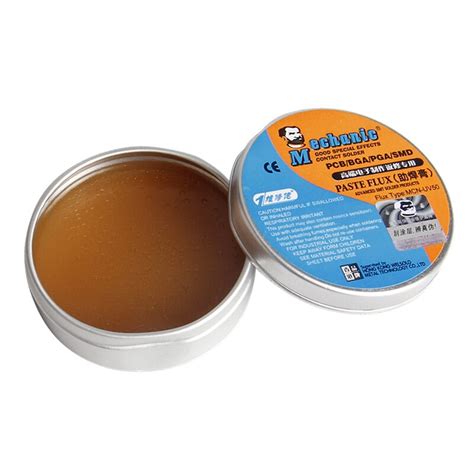What is Solder Flux?
Solder flux is a chemical cleaning agent used in soldering to help remove oxides and other contaminants from the surfaces to be soldered. It promotes wetting of the solder to the workpiece, enabling a strong metallurgical bond and reliable electrical connection.
Flux serves three key functions in the soldering process:
- Removes oxides and prevents reoxidation
- Improves wetting of the solder to the metals being joined
- Facilitates heat transfer from the soldering iron to the joint
Without flux, solder will not properly adhere to and wet the surface, resulting in a poor solder joint.
Types of Solder Flux
Solder fluxes come in several different formulations suited for various applications. The three main categories are:
| Flux Type | Composition | Residue | Cleaning |
|---|---|---|---|
| Rosin | Rosin based, activated or non-activated | Non-corrosive, non-conductive | May not require cleaning |
| Water Soluble | Organic acids | Corrosive, conductive | Must be cleaned |
| No-Clean | Rosin based with low activation | Minimal clear residue | Does not require cleaning |
Rosin Flux
Rosin fluxes are made from pine tree sap and are available in non-activated (R), mildly activated (RMA), and activated (RA) formulations. The activators, typically halides, increase the flux’s oxide removal capability.
Rosin fluxes are the most common type for electronics soldering. They have good cleaning action, provide excellent solder wetting, and leave a non-corrosive residue. In many cases, the residue can be left on the board without issue, though cleaning may be preferred for appearance or to prevent degradation over time.
Water Soluble Flux
Water soluble fluxes use organic acids as activators and require cleaning after soldering to remove corrosive residues. They provide the most aggressive cleaning action for heavily oxidized surfaces.
Water soluble fluxes are used in applications where cleaning is mandatory, such as soldering plumbing pipes. The corrosive nature of the activators would damage electronic assemblies if left on the board.
No-Clean Flux
No-clean fluxes contain a small amount of rosin with low levels of activators. They provide moderate oxide removal capability while leaving minimal, clear residue that is non-corrosive and generally considered safe to leave on the PCB.
No-clean fluxes are popular for electronics manufacturing as they eliminate the cleaning step, reducing costs and environmental impact. However, uncleaned flux residues can still cause issues in some cases, such as with high frequency RF circuits or under certain environmental conditions.
How to Use Solder Flux
Applying Flux
There are several methods to apply solder flux depending on the job:
Flux-Cored Solder Wire
The easiest way to apply flux for hand soldering is to use solder wire with a flux core. As the solder melts, it automatically dispenses flux onto the joint. Flux-cored solder is available with different flux types and solder alloys for various applications.
Flux Pen
For more controlled flux application, a flux pen dispenses liquid flux through a felt tip. Simply run the pen along the surfaces to be soldered before applying the solder. Flux pens give more precise flux placement compared to cored solder without making a mess.
Flux Paste
Sticky flux paste can be applied by syringe, brush, or other tools. It is useful for pre-applying flux to components for assembly or rework. The paste holds components in place prior to soldering.
Liquid Flux
Liquid fluxes can be applied by brush, dropper, spray, or dipping. Dipping is commonly used in automated selective soldering processes. Spraying and brushing are suitable for large areas in hand soldering and rework.
Soldering with Flux
Once flux is applied to the joint, the basic steps for soldering are:
- Pre-heat the joint with the soldering iron to activate the flux and drive off moisture
- Apply solder to the joint, allowing it to melt and flow around the connection
- Remove the iron and let the joint solidify, keeping the parts still until the solder hardens
Properly applied flux should promote good wetting, causing the solder to evenly coat the surfaces and form a smooth, concave fillet. If the flux burns or smokes excessively, the iron temperature is too high.
Post-Soldering Cleaning
Depending on the type of flux used, cleaning may be required after soldering to remove flux residues.
Rosin fluxes can usually be left on the board if appearance is not a concern. However, over time the residues may absorb moisture and become conductive, potentially causing reliability issues. Cleaning is recommended for harsh environments.
Water soluble fluxes must be promptly removed after soldering, as the residues are corrosive and conductive. Cleaned promptly with water, they will not harm the assembly. If left on the board, they can rapidly cause corrosion.
No-clean fluxes are designed to be left on the board, but can still be removed if desired for cosmetic reasons. In general, it is better to clean than risk problems later.
To properly clean flux residues:
- Allow assemblies to cool after soldering
- Clean using an appropriate solvent for the flux type
- Rinse thoroughly with clean solvent or water
- Dry completely before further handling

FAQ
What is the best solder flux for electronics?
For general electronics work, rosin-based fluxes are recommended, either RMA or no-clean. These provide good wetting and oxide removal without leaving harmful residues. No-clean fluxes eliminate the need for post-solder cleaning in most cases.
Is flux mandatory for soldering?
Yes, flux is necessary for reliable solder joints. Without flux, solder will not wet and adhere to the surfaces properly, resulting in a weak connection. The flux removes oxides to allow the solder to bond to the base metals.
Can you solder without flux?
While it may be possible to solder without flux on pristine, freshly cleaned surfaces, it is not advisable. Flux is inexpensive and ensures consistent, reliable solder joints. Soldering without flux will likely result in poor wetting, weak joints, and premature failure.
What happens if you don’t clean off flux?
Leaving flux residues on the PCB can potentially cause issues over time, depending on the type of flux:
-
Rosin fluxes are generally benign, but the residues may become conductive in high humidity, leading to leakage currents or shorts. Cleaning is recommended for harsh environments.
-
No-clean fluxes leave minimal residue that is considered safe, but flux can still cause issues in high-reliability applications or with sensitive RF circuits. When in doubt, clean it off.
-
Water soluble fluxes are corrosive and conductive – they will damage the board if not promptly removed. Always clean these residues after soldering.
If appearance is important, cleaning is advised for any flux type, as the residues can be unsightly.
Is solder flux toxic?
While some fluxes are safer than others, fluxes can contain toxic chemicals and should be handled properly. Lead-free rosin fluxes are safest, but still should not be ingested. Avoid breathing fumes and wear gloves to prevent skin contact. No-clean and water-soluble fluxes tend to be more irritating than rosin fluxes. Proper ventilation is important when soldering. Consult the flux MSDS for full safety information.


Leave a Reply